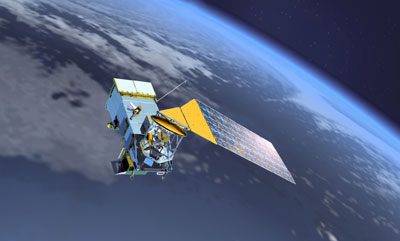The end of NPOESSby Taylor Dinerman
|
| To carry out any but the simplest program involving more than one government organization and remain within the law, not to mention the budget, is probably impossible. |
If the failure of NPOESS shows anything, it is that the US government is exceptionally hard put to perform so-called “whole of government” operations. If the State Department, the Pentagon, the CIA, the Department of Agriculture, and others cannot get their act together on a major national priority like Afghanistan, why should anyone expect NASA, NOAA, and the Pentagon to jointly build an effective weather satellite? It would seem that the US government has gotten so big and has generated so many laws and regulations—its own “self-generated friction”—that any program requiring inter-agency goodwill, common sense and cooperation is almost impossible to sustain.
According to University of Tennessee Law Professor Glenn Renyolds, who blogs as “Instapundit”, there are more than 50,000 pages of federal laws and 161,117 pages of federal regulations. To carry out any complex, multi-agency program and at the same time to precisely and indisputably conform to all these rules is probably beyond the capacity of any human institution. Individual agencies have developed their own ways of coping with this phenomena, although it gets harder and harder every year. To carry out any but the simplest program involving more than one government organization and remain within the law, not to mention the budget, is probably impossible.
Certainly NPOESS was a highly ambitious, technologically cutting-edge project. If the instruments that will fly next year on the NPOESS Preparatory Project satellite perform anywhere near as well as planned, US industry will have made a major advance in earth sensing systems. Yet the government is still stuck with the need to replace NPOESS with a new generation of military and civil weather satellites.
The administration’s plan to include new climate monitoring sensors in the replacement Joint Polar Satellite System (a NASA/NOAA partnership) will raise some eyebrows among those, in Congress and elsewhere, who have been critical of climate change science. Unless both agencies are very careful and very open, they will find themselves vulnerable to the kind of political investigations that any experienced bureaucrat has good reason to dread.
The Defense Department is luckier than their former civilian partners. They not only have a pair of old technology Defense Meteorological Satellite Program (DSMP) spacecraft that are being prepared for launch in 2012 and 2014, but they now can develop something resembling a clean sheet design. We will now have a program that will allow outsiders to see if the USAF’s space procurement workforce has truly improved since the bad old days of the late 1990s and early 2000s.
| Building a fleet of satellites whose sensors were constantly being upgraded would do wonders both for the military’s weather forecasting capabilities and also for the US industrial base. |
One interesting possibility would be a small “operational-type” constellation. Each spacecraft could carry one or at most two sensors. These would be modular and the bus could incorporate new sensors with relative ease. Using standardized interfaces and simple power and control systems, the US military could launch two or three of these satellites every year instead of one every two or three years at best.
In an interview with Space News, Deputy Air Force Under Secretary for Space Gary Payton said that they are “doing a quick scrub of warfighter requirements”. It might be better if they took their time, they must know that they will be creating a program that could last for two or three decades. Making the right choice now will save money and lives far into the future.
Building a fleet of satellites whose sensors were constantly being upgraded would do wonders both for the military’s weather forecasting capabilities and also for the US industrial base. Instead of sensors that take a decade or more to develop, these new systems could be upgraded incrementally.
It is unfortunate that NPOESS ended up the way it did. Sadly, it showed once again that the US space industry is facing a crisis. The problem is not just the workforce in and out of government. It is the whole way that Washington operates that needs to be reexamined, and this goes far beyond the problems of a single program or industry.
